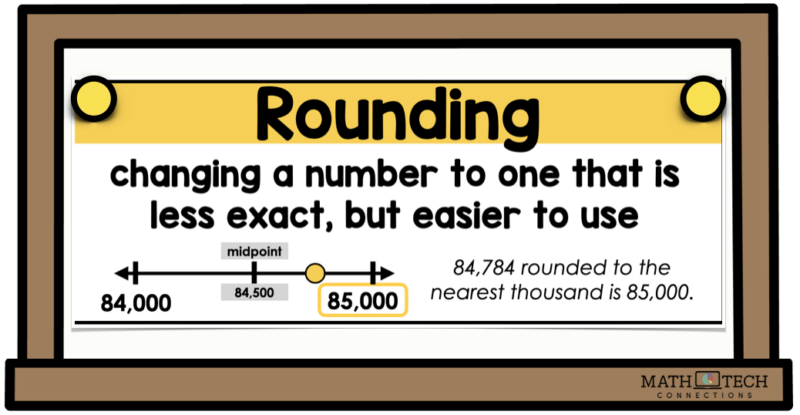
Rounding is a strategy for estimating.
When we round, we find a benchmark number that is closest to our actual number to use as an estimate.

- To round 43 to the nearest 10, locate it on a number line.
- You can see 43 is closer to 40 than to 50.
- 43 rounded to the nearest 10 is 40.
- 40 can be used as an estimate for 43.

- To round 356 to the nearest 100, locate it on a number line.
- You can see 356 is closer to 400 than to 300.
- 356 rounded to the nearest 100 is 400.
- 400 can be used as an estimate for 356.

- To round 4,300 to the nearest 1,000, locate it on a number line.
- You can see 4,300 is closer to 4,000 than to 5,000.
- 4,300 rounded to the nearest 1,000 is 4,000.
- 4,000 can be used as an estimate for 4,300.

- To round 26,500 to the nearest 10,000, locate it on a number line.
- You can see 26,500 is closer to 30,000 than to 20,000.
- 26,500 rounded to the nearest 10,000 is 30,000.
- 30,000 can be used as an estimate for 26,500.
Practice Problems
5,807 rounded to the nearest thousand is 5,000.